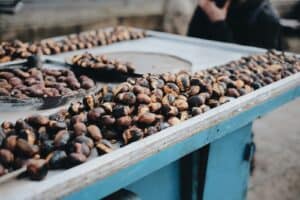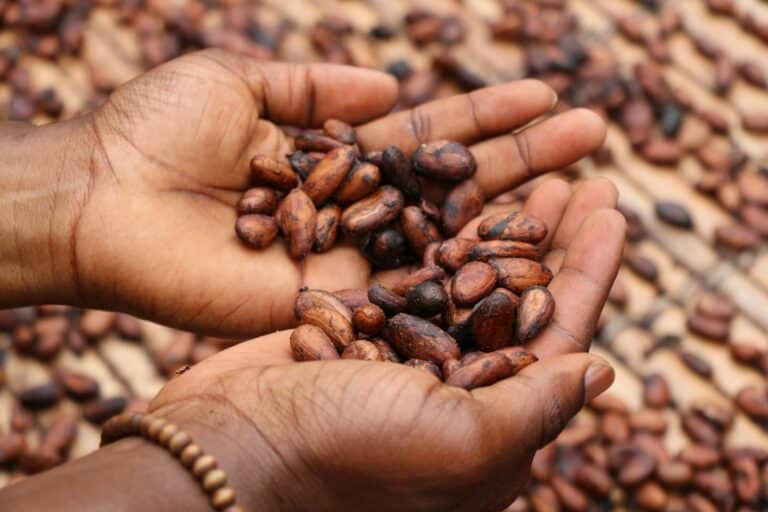In the world of chocolate, there’s a rich tapestry of flavors and experiences that go far beyond the shelves of your local supermarket. As a chocolate aficionado, I’ve indulged in everything from the humble Hershey’s Kisses to the more exotic bars crafted in small batches. This journey has led me to a fascinating comparison: artisanal vs mass produced chocolate.
Craft chocolate, often made in kilos rather than tonnes, offers a depth of flavor that mass-produced chocolate can’t match. These artisanal chocolates, crafted with fine cacao, boast a wide range of flavor notes, contrasting sharply with the limited flavors of their industrial counterparts. Let’s dive into the nuances that set these two worlds apart, exploring why your next chocolate bar might be more than just a treat—it could be an experience.
Artisanal vs Mass Produced Chocolate
Definition and Characteristics
When I delve into the topic of Artisanal vs Mass Produced Chocolate, the key differences become strikingly clear. Artisanal chocolate, often referred to as craft chocolate, is produced in small batches by dedicated chocolate makers. These enthusiasts prioritize the fine cacao’s quality, sourcing cocoa beans directly and ensuring every chocolate bar is a reflection of their passion and dedication.

Artisan chocolates embody the bean to bar process, meaning chocolate makers control every step from choosing the right cacao beans to the production of finished chocolate bars. In contrast, mass-produced chocolate is all about volume. Big chocolate companies focus on consistent flavor profiles that appeal to a broad audience, often at the cost of the actual quality of cocoa mass and other raw materials.
Production Process
The production process of craft chocolate involves meticulous attention to detail. Craft chocolate makers employ methods that preserve the natural flavors of cocoa beans, often from single origin chocolate sources or a blend that highlights unique flavor profiles. This bean to bar process includes hand-sorting, roasting, and conching, aiming to elevate the natural characteristics of the fine cacao. On the other hand, mass produced chocolate relies on automated, large-scale processes designed for efficiency. Commercial chocolate production prioritizes consistency and shelf stability, often sacrificing the nuanced flavors recognized by chocolate lovers.

Ingredients Used
Ingredients play a pivotal role in distinguishing artisanal chocolate from its mass-produced counterpart. Artisan chocolates commonly use cocoa butter and natural flavors, avoiding artificial additives. They respect the integrity of the raw cacao beans, resulting in a richer, more authentic taste. Mass-market chocolate, however, frequently includes substitutes like palm or vegetable oils and relies on cocoa powder or lower quality cocoa mass, alongside various chemicals for flavoring and preservation. This fundamentally impacts not just taste but also the actual quality and healthiness of the chocolate bar.
Taste and Quality Comparison
Taste and quality are where the divide between artisanal and mass produced chocolate becomes most apparent. Craft chocolate offers a depth of flavor that can be likened to experiencing fine wine. The unique flavor profiles from different cacao origins, especially those in regions like South America, are celebrated, allowing chocolate lovers’ taste buds to explore a world of complexity and nuance. Mass market chocolate, striving for a uniform taste, often presents a simplified, overly sweetened version that masks the actual quality of the cocoa beans used. It’s this dedication to showcasing the natural flavors of high quality cacao that elevates artisan chocolate far above its mass-produced equivalents.
Pricing and Accessibility
Given the careful attention to detail, superior ingredients, and often ethical sourcing practices, artisanal chocolate comes at a higher price point. This reflects not just the costs of high quality cacao but also the labor of love from chocolate makers who respect their craft and the bean to bar process. In contrast, mass produced chocolates are readily available at lower prices, making them accessible to a wider audience. While artisan chocolates may require some effort to find, dedicated chocolate lovers understand that the experience of savoring a craft chocolate bar is well worth the search and the price.
Choosing between artisanal and mass-produced chocolate ultimately boils down to what you value in your chocolate experience. If you’re like me and appreciate the nuanced flavors and ethical sourcing that come with craft chocolate, then the investment in artisanal bars is a no-brainer.
On the other hand, if convenience and consistency are your top priorities, mass-produced options might better suit your needs. Remember, every chocolate has its place and occasion. Whether it’s savoring a piece of fine artisanal chocolate as a treat or enjoying a familiar favorite from a big brand, there’s no wrong choice. What matters most is finding joy in the chocolate you choose to indulge in.
Frequently Asked Questions
What chocolate do professionals use?
Professionals often use couverture chocolate, which is known for its high quality, ideal for coating desserts and creating fine chocolate pieces. It’s available in both dark and milk chocolate varieties.
What are the three categories of chocolate?
The primary categories of chocolate are white chocolate, milk chocolate, and dark chocolate. Additional types include bittersweet chocolate, chocolate liquor, cocoa powder, and ruby chocolate.
What’s the best chocolate in the world?
Some of the world’s best chocolate makers include Teuscher in Zurich, Switzerland, Vosges Haut-Chocolat in Chicago, Illinois, Jacques Torres Chocolate in New York, Norman Love Confections in Florida, Valrhona in France, and Richard Donnelly Fine Chocolates in Santa Cruz, California.
What is the Swiss method of making chocolate?
The Swiss method involves a process known as conching, a key to achieving a smooth, creamy texture in chocolate. This technique plays a significant role in developing the chocolate’s rich flavors and renowned smoothness.
Why is Valrhona chocolate so expensive?
Valrhona chocolate’s higher price reflects its commitment to quality over quantity, purchasing only 0.13% of global cocoa production to ensure the selection of the best raw ingredients. Additionally, Valrhona’s mission to contribute to a better world influences its pricing.
